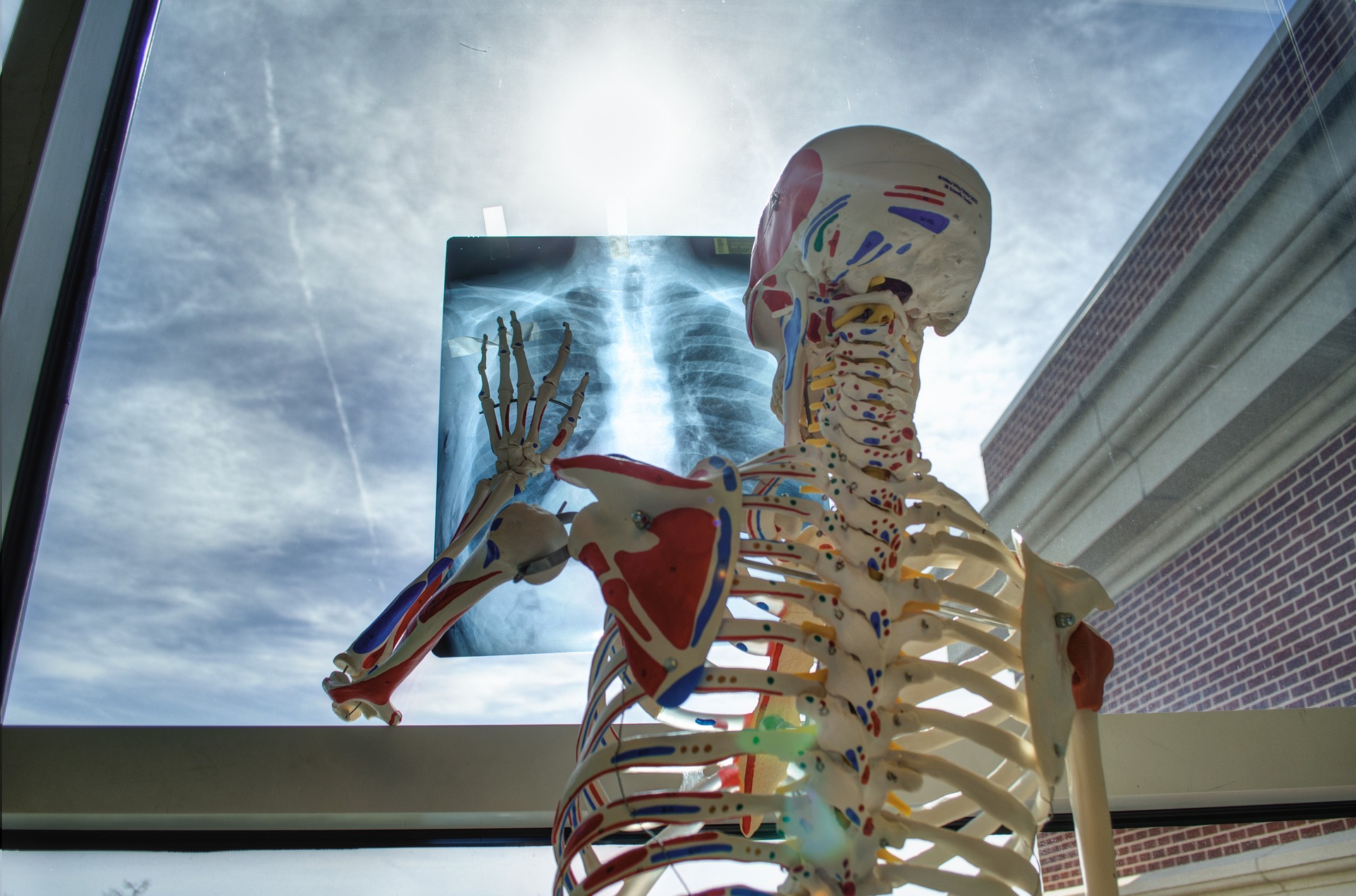On 31 December 2023, an extremely promising Polish project that could bring about a revolution in the field of implantology comes to an end.
Syntplant has created biodegradable implants that, when inserted, stimulate bone tissue growth. Simultaneously, the utilized materials are absorbed and disappear without adversely affecting patients’ health.
Each implant is ‘tailor-made’ – the design is created from CT scans and then 3D printed.
Biodegradable polymer. How does an implant turn into bone?
As Monika Rutkowska, MD, PhD, Deputy Head of the Department of Otolaryngology, Head, and Neck Surgery at WSK 4 in Wrocław, explains:
“The implant is constructed from a polylactide (PLA) matrix onto which hydroxyapatite crystals have been deposited. This is a biocompatible material, allowing the implant to fuse with our patient’s other bones. Over time, it will remodel into almost normal bone.” [1]
Hydroxyapatite is one of the core components of teeth and bone, providing a scaffold for connective tissue. This synthetically obtained one also shows biocompatibility, stimulating the growth of bone tissue on the implant. [2]
PLA degrades to harmless lactic acid, making it a fully biodegradable polymer. [3] It is possible to direct the resorption time of the implant material to conduct the reconstruction of bone tissue during the decomposition of the implant. This allows the defect to be repaired during surgery, followed by gradual decay of the implant with parallel bone tissue regeneration. [4]
Polish bioimplants – successes to date
In 2020, the first operation in Poland, and probably also the first in the world, was performed to insert a resorbable implant into a patient who had lost part of his bone during tumor excision. The skull fragment was implanted in a 40-year-old patient at the 4th Military Clinical Hospital in Wrocław. [4]
In the databases of the National Center for Research and Development (NCBR), one can also find a description of a fully successful mandibular implant for a patient after a car accident. Fourteen months after the procedure, the bone tissue had regenerated and allowed the dental implants to be fixed. [5]
The project’s website – cyberbone.eu – also provides information on the popliteal osteotomy experiments carried out at the Galen-Ortopedia center in Bierun. [6]
The future of Polish implants. Potential applications
The innovative implant technology developed by Polish researchers is used in:
- oncology;
- orthopedics;
- plastic surgery; reconstructive surgery;
- reconstructive surgery.
Implants prepared from bone-forming filaments can be used, for example, in cardiac surgery to regenerate the sternum bone. On the other hand, it also allows more ordinary procedures, e.g., reconstruction of parts of the jawbone, to be carried out in dental surgeries. [4]
The technology can be extremely helpful in the treatment of bone defects in children who cannot benefit from traditional implants (e.g., titanium), which ‘do not grow’ with the patient. The application of the solutions being developed in the project can eliminate this problem.
Biodegradable implants overcome globally relevant issues and allow this type of surgery to become more common in smaller hospitals and more impoverished countries.
After a skull reconstruction procedure in a patient from Wrocław, Monika Rutkowska said: “if this material fulfilled the hopes placed in it, we would basically eliminate the step where it is necessary to take the patient’s own tissues and mutilate more sites.” [7]
At this time, we already know that the materials used work as their creators intended.
Project details
The technology is the subject of the project ‘Development of customized biodegradable implants for bone reconstruction procedures’. Its beneficiaries are:
- Syntplant sp. z o.o. from Poznań;
- Piastów Śląskich Medical University from Wrocław;
- Moratex Institute of Safety Technology from Łódź.
The project is being implemented under the Intelligent Development Operational Program and is co-financed by the European Regional Development Fund. Its implementation is scheduled for the period from 01.02.2020 to 31.12.2023. The value of the project is PLN 7,940,717, of which PLN 6,866,593 has been obtained in co-financing. [4]
The project comes to an end on 31 December 2023. Let’s hope that we will hear about the impact of the initiative on both Polish and global market soon.
Bibliography:
[1] Website of the 4th Military Clinical Hospital in Wrocław;
https://www.4wsk.pl/Aktualnosci,8.html:n=347 (date of access: 5.10.2023)
[2] Nano-hydroxyapatites in biomedical applications;
https://openin.pl/index.php?option=com_content&view=article&id=134:nano-hydroksyapatyty-w-zastosowaniach-biomedycznych&catid=35&Itemid=213 (date of access: 6.10.2023)
[3] Poly(Lactic Acid): Synthesis, Structures, Properties, Processing, and Applications. Auras R., Lim LT., Selke SE., Tsuji H., (2010); https://onlinelibrary.wiley.com/doi/book/10.1002/9780470649848
[4] Successful NCRD Beneficiaries; https://www.gov.pl/web/ncbr/opracowanie-zindywidualizowanych-implantow-biodegradowalnych-do-zabiegow-rekonstrukcji-kosci (date of access: 5.10.2023).
[5] Cyberbone project website (description of mandibular surgery); https://cyberbone.eu/aktualnosci/pierwszy-sukces-projektu–udana-regeneracja-tkanki-kostnej-w-zuchwie-pacjenta (date of access: 5.10.2023)
[6] Cyberbone project website (information about clinical experiments); https://cyberbone.eu/aktualnosci/bierun-galen-ortopedia—kolejny-eksperyment-hto-z-wykorzystaniem-naszego-celownika-i-spersonalizowanego-implantu-3d-z-kosciotworczych-filamentow (date of access: 5.10.2023)
[7] TVP 3 Wrocław footage of a cranial implant;
https://www.tvp.info/49686251/wroclaw-pacjent-moze-odzyskac-czesc-czaszki-pionierska-operacja-polskich-lekarzy-wieszwiecejj (date of access: 5.10.2023)
Marcin Szałaj


